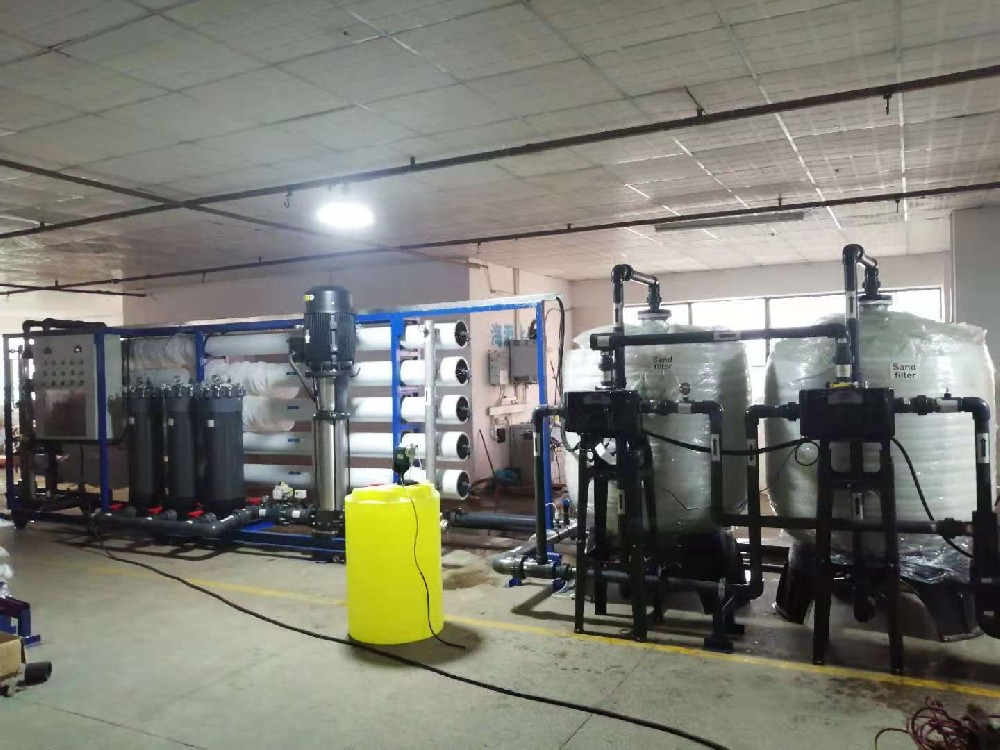
Wechat/Whatsapp:
+8613798883773

Wechat/Whatsapp:
+8613798883773
HYWATER Reverse Osmosis plant/system


Why add Antiscalant dosing in Reverse osmosis equipment The reverse osmosis equipment is to process the raw water through pretreatment (multimedia filtration, activated carbon filtration), precision filter, etc., pressurized by a pump, and use a reverse osmosis membrane with a pore size of 1/10000um to make the higher concentration of water into a low concentration Water, remove industrial pollutants, heavy metals, bacteria, viruses, etc. in the water, so as to achieve the water production that meets the standard. The current water treatment process of reverse osmosis equipment has the highest water purity. The reverse osmosis membrane is a key component of reverse osmosis equipment. After long-term operation, calcium and magnesium plasma in the water will continue to precipitate and adhere to the surface of the reverse osmosis membrane, forming scales and blocking the membrane pores, which will affect the efficiency of the reverse osmosis system and cause damage. In order to avoid such problems, a dosing device should be added before the raw water enters the reverse osmosis host, and a scale inhibitor should be added to the water to delay the precipitation of calcium and magnesium ions and scaling on the membrane surface, improve the water production and the quality of the water, and reduce the operation Cost of wastage. How does the scale inhibitor have the effect of preventing scaling: 1. Complexing and solubilization: the reverse osmosis scale inhibitor is ionized after being dissolved in water to form a negatively charged molecular chain. It forms a water-soluble complex or chelate with Ca2, thereby making the inorganic salt more soluble Increase, play a role in scale inhibition. 2. Lattice distortion effect: part of the functional groups in the reverse osmosis scale inhibitor molecules occupy a certain position on the inorganic salt crystal nucleus or crystallites, hindering and destroying the normal growth of inorganic salt crystals, and slowing down the growth of crystals Speed, thereby reducing the formation of salt scale; 3. Electrostatic repulsion effect: the reverse osmosis scale inhibitor is dissolved in water and adsorbed on the crystallites of the inorganic salt, which increases the repulsion between the particles, hinders their agglomeration, and keeps them in a good dispersion state, thereby preventing or reducing scales Formation. Matters needing attention when using scale inhibitor: 1. When using polyacrylic acid scale inhibitors, be careful that membrane fouling may be caused when the iron content is high. This fouling will increase the operating pressure of the membrane, and the membrane needs to be pickled. 2. If a cationic coagulant or filter aid is used in the pretreatment, special attention must be paid when using an anionic scale inhibitor, which will produce a kind of viscous pollutant pollution, which is very difficult to clean. 3. Excessive addition of antiscalant will cause deposits on the membrane surface and cause new pollution problems. The antiscalant must be thoroughly flushed out when the equipment is shut down. 4. When the scale inhibitor dosing system is designed, adding a stirrer is a very effective mixing method. Stirring to promote mixing before the raw water enters the host of the reverse osmosis equipment will have a better use effect. More inquiries related to Reverse osmosis equipment please contact: Mob& Wechat& WhatsApp: (+86)13544774483 Email: sales010@water-sy.com We will provide high-quality, all-round comprehensive professional services for project consulting, system design, manufacturing, installation and commissioning, personnel training, etc
